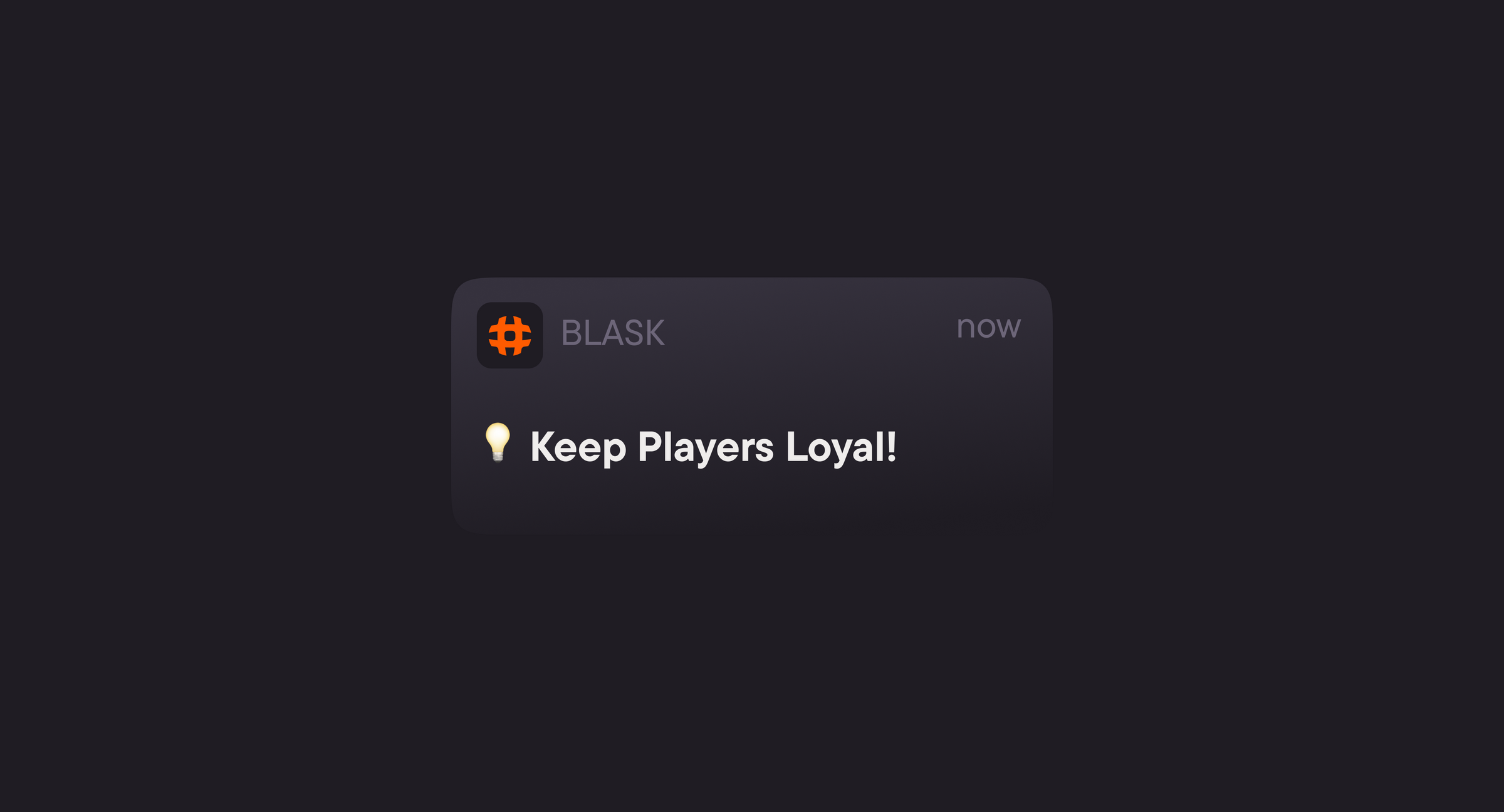Player retention is a critical factor for sustained success in the highly competitive iGaming industry. In this article, we'll dive deep into how advanced analytics, powered by artificial intelligence (AI) and machine learning, can help iGaming operators not only retain players but also boost their profitability by optimizing user engagement. We’ll also highlight how Blask, a leader in iGaming analytics, offers tools that make player retention smarter and more strategic.
Why is player retention important in iGaming?
In iGaming, acquiring new players is important, but retaining existing players can deliver far greater long-term value. Here's why:
- Lower cost: It’s more cost-effective to retain existing players than to acquire new ones.
- Higher lifetime value (LTV): Engaged players have a higher LTV, which directly correlates to greater profitability.
- Stronger brand loyalty: Retained players are more likely to promote the platform through word-of-mouth, increasing organic acquisition.
- Increased revenue stability: A stable player base helps reduce the volatility of revenue, creating a more predictable growth path.
3 pros to keeping existing players is better than finding new ones. Here's why:
- It's 40% easier to sell to current customers than to new ones.
- Existing customers are 50% more likely to buy new products.
- Loyal customers spend 31% more than new ones.
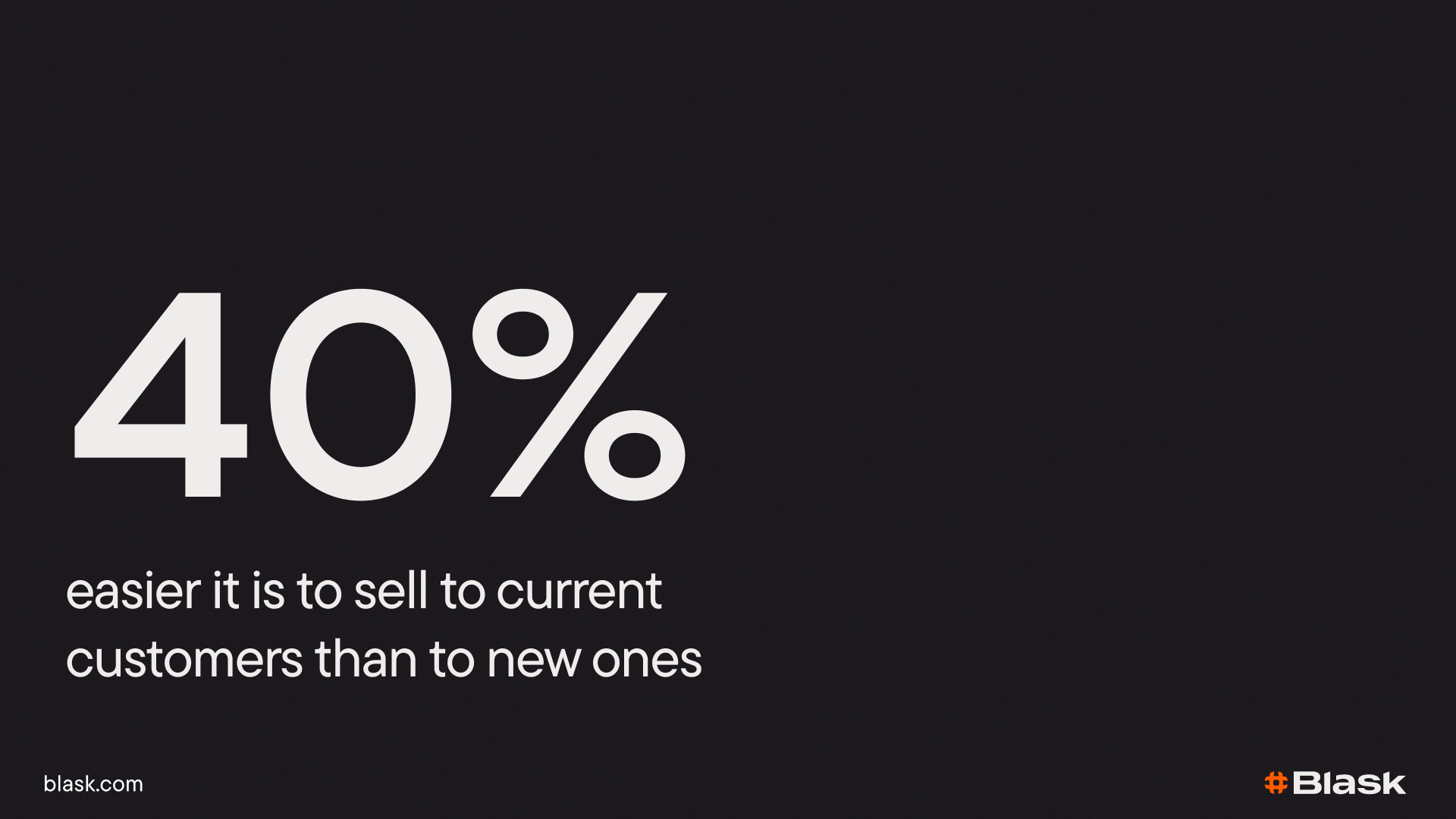
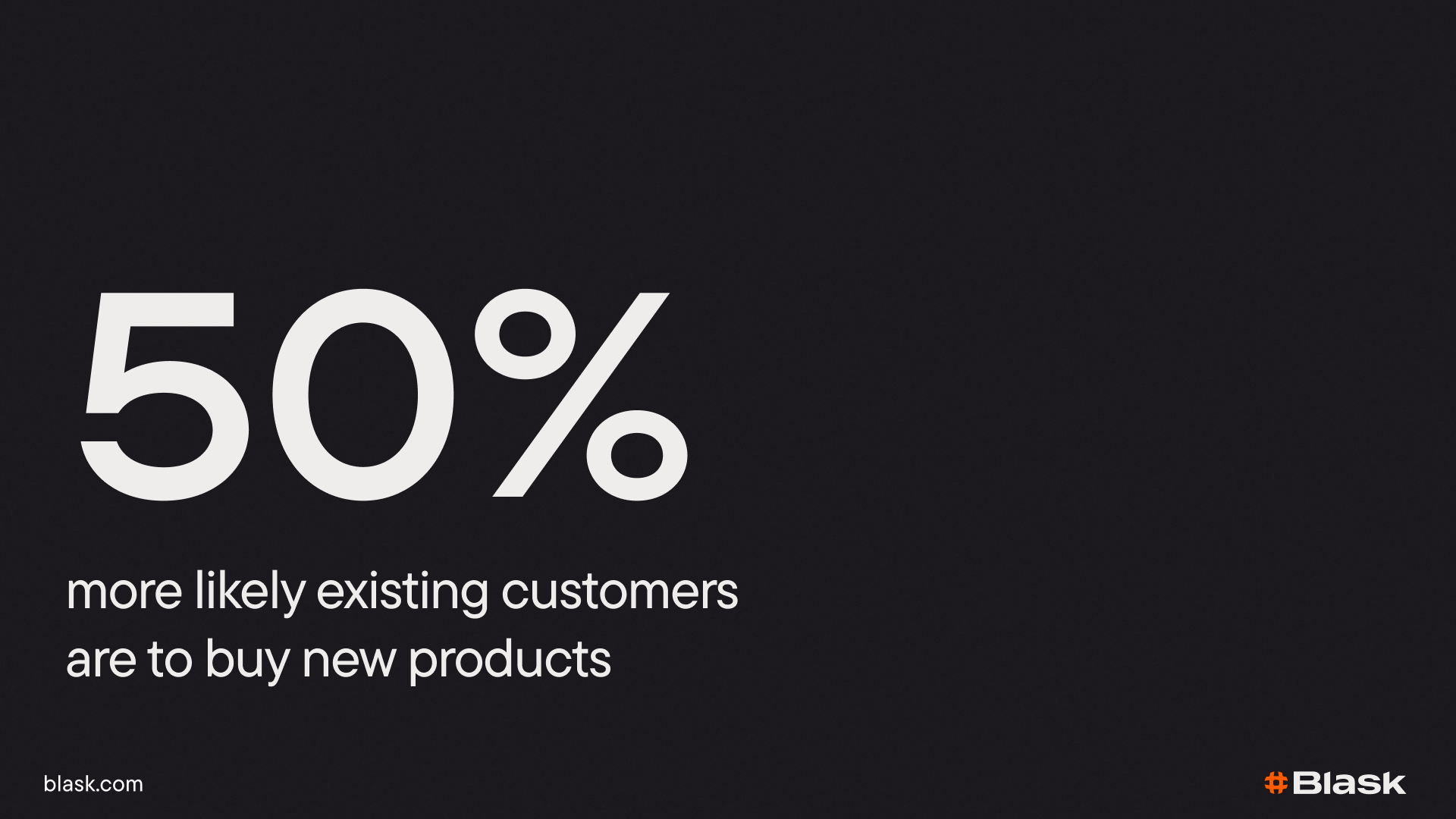
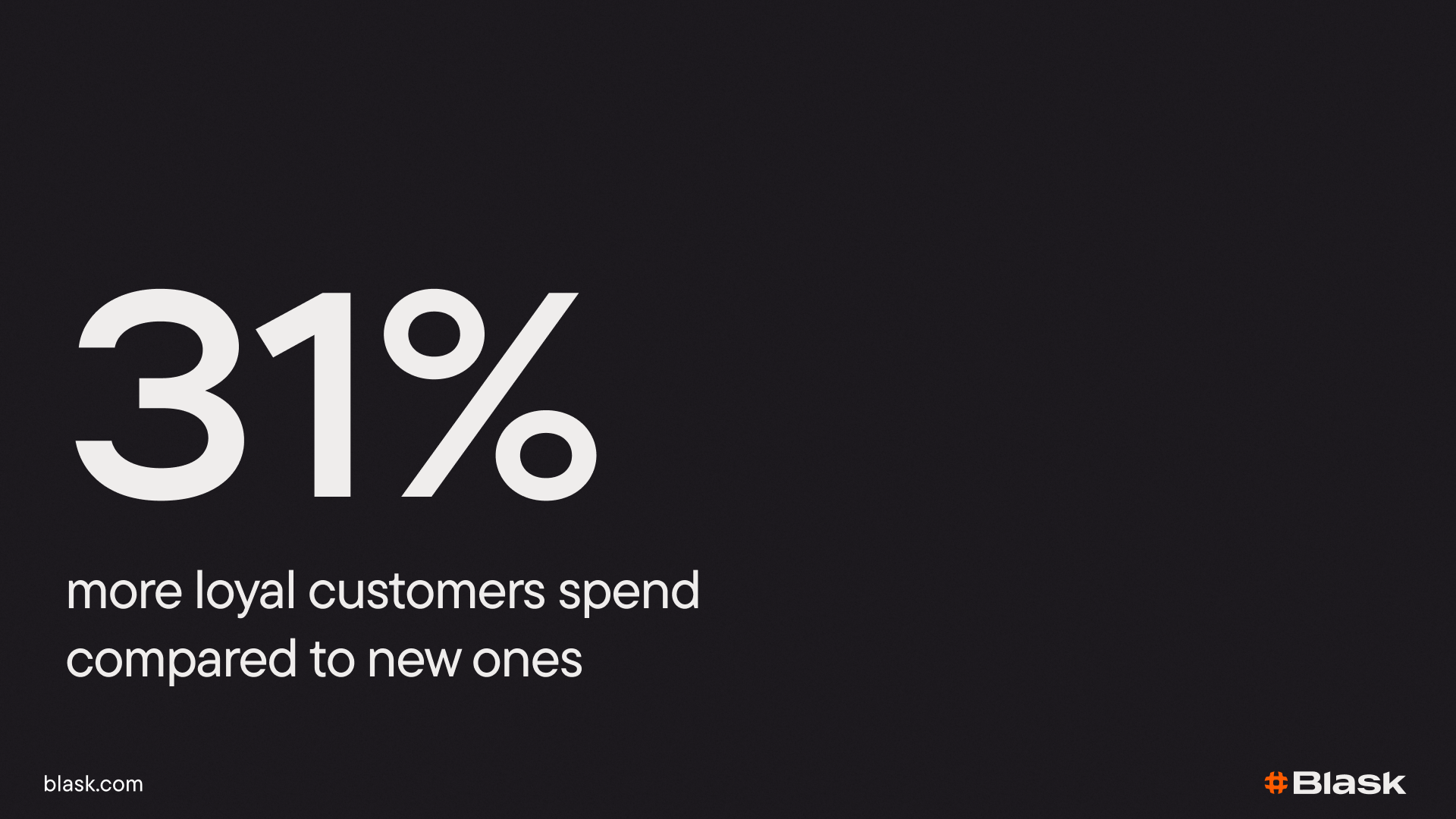
Blask: Why is player retention important in iGaming
These facts show that focusing on current customers can boost sales and revenue more effectively. They're more open to new products and spend more, making them valuable for business growth.
The role of advanced analytics in retention.
With data-driven decisions becoming central to business success, advanced analytics can turn retention from a challenge into an opportunity.
- Personalization: Using AI to personalize the player experience boosts engagement. Customizing games, rewards, and communication based on past player behavior significantly increases the likelihood of retention.
- Predictive modeling: With tools like Blask’s Estimated First-Time Deposits (eFTD), operators can forecast potential player acquisition and revenue. Blask also allows operators to benchmark their FTD against their closest competitors to help them stay ahead of the game.
- Real-time data insights: Real-time analytics enables operators to respond to player behavior as it happens. Blask Index helps track market dynamics and player interest, giving insights into how brands are performing compared to the competition.
Blask Index explained: forecasting iGaming market trends
- Segmentation and targeting: Advanced segmentation using analytics allows operators to create highly focused retention strategies. For example, segmenting players based on their spending behavior or engagement levels helps in tailoring offers that are more likely to resonate.
- Sentiment analysis: AI can also track player sentiment through social media and in-game interactions, helping operators to gauge overall satisfaction and spot dissatisfaction early on.
Key metrics for measuring player retention
1. Player Lifetime Value (LTV)
This metric is essential for understanding the long-term worth of a player. Advanced analytics can help break down how much revenue a player will generate over their entire lifetime on the platform, guiding marketing and retention efforts.
2. Churn Rate
The churn rate measures the percentage of players who stop using the platform over a specific period. With predictive modeling, operators can identify at-risk players before they churn, enabling personalized retention efforts.
3. Engagement Rates
Advanced analytics track engagement across games, sessions, and player interactions, offering granular insights into how often and how long players are staying on the platform.
4. Gross Gaming Revenue (GGR)
This metric measures the total amount of money wagered by players minus the winnings paid out, providing a clear picture of the platform's revenue before operating expenses. Advanced analytics in iGaming can break down GGR by game type, player segment, and time period, offering insights into the most profitable areas of the operation and guiding strategic decisions for game development and marketing.
Blask’s Estimated Gross Gaming Revenue (eGGR) tool is an AI-driven metric that estimates the gross revenue generated from players for all the brands in the market. You can easily find out how well your competitor performs.
Leveraging Blask's analytics for player retention.
Blask offers powerful tools specifically designed to enhance player retention in iGaming. Let’s explore some of these features:
Blask Index for market insights.
Blask Index provides real-time insights into market trends, player behavior, and brand performance. With its ability to measure market volume and track even the tiniest shifts in player interest, operators can make informed decisions about which areas need improvement.
How Blask Index helps:
- Compare brands and markets: Understand how your brand performs compared to competitors and different markets.
- Monitor growth trends: Real-time data on whether your retention efforts are working, compared to broader market trends.
Estimated First-Time Deposits (eFTD) for retention optimization.
Blask’s eFTD tool allows operators to estimate the number of first-time deposits, offering insights into the effectiveness of initial retention strategies. By tracking these deposits over time, operators can identify which efforts are yielding the best long-term results.
Benefits of eFTD for retention:
- Identify retention gaps: See if new players are converting into long-term users and adjust strategies accordingly.
- Track market-wide performance: Compare eFTD data across brands to gauge where your retention efforts stand relative to the competition.
Relative Market Share.
Blask’s Relative Market Share feature compares your market share with that of competitors, giving you a clear understanding of where your brand stands. This is essential for strategizing retention efforts aimed at maintaining or growing your market share.
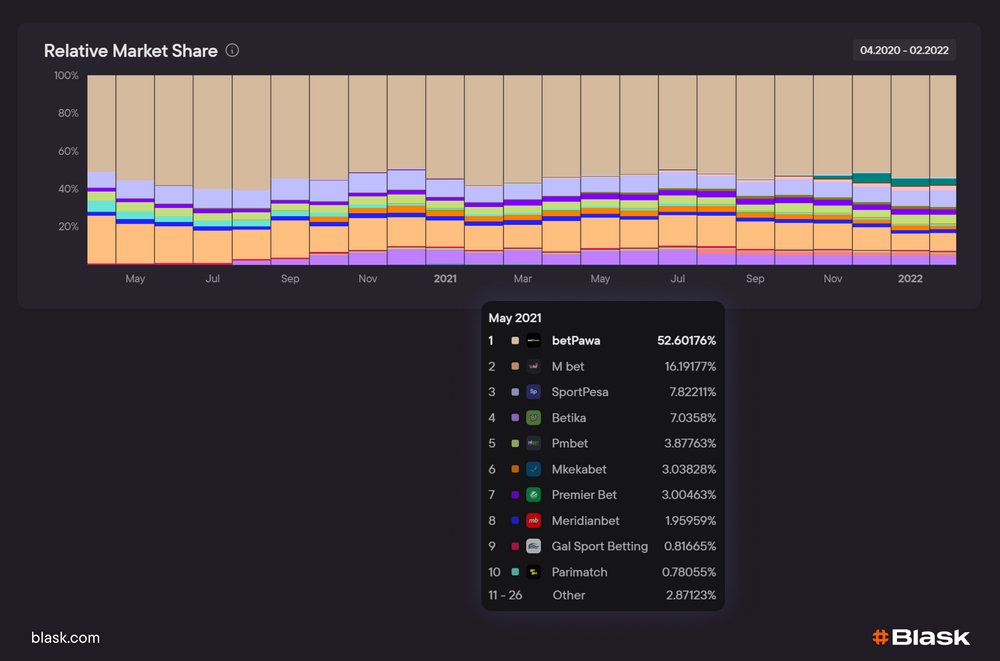
Benefits of Relative Market Share for Retention:
- Strategic Positioning: Knowing how your market share fluctuates helps you adjust retention campaigns to stay competitive.
- Focused Comparisons: Directly compare your brand with competitors to identify where retention strategies are succeeding or lagging behind.
How advanced analytics improve retention strategies?
Personalizing offers and bonuses.
By leveraging AI and machine learning, you can offer personalized bonuses and promotions that appeal directly to player interests and behaviors. This not only keeps players engaged but also enhances their overall experience, making them less likely to churn.
Identifying and reducing churn.
Predictive analytics allow operators to identify players at risk of leaving the platform. With early intervention, such as targeted bonuses or personalized communication, operators can reduce the churn rate and retain more players.
Enhancing player loyalty.
Through segmentation and loyalty programs driven by analytics, operators can reward high-value players more effectively, encouraging brand loyalty and reducing the likelihood of them switching to competitors.
Case study.
The Dutch platform legalewedenschappen.nl serves as a vital resource for Netherlands-based players, offering:
- Up-to-date information on gambling regulations
- A curated directory of licensed operators
- Educational content on responsible gaming practices
This multifaceted approach enhances player experience by delivering crucial insights and guidance, fostering a well-informed and secure gambling environment for Dutch enthusiasts.
The future of analytics in player retention.
The iGaming industry will increasingly rely on data-driven solutions for player retention. As AI models become more sophisticated, they will be able to predict not just player behavior, but also optimal times for intervention, the most appealing promotions, and even the best content to keep players engaged. With tools like those provided by Blask, operators will have everything they need to thrive in a competitive marketplace.
Conclusion.
Advanced analytics are transforming player retention strategies in the iGaming industry. By leveraging AI-powered insights from Blask, operators can better understand their players, predict behavior, and implement strategies that keep players engaged for the long term. Whether it’s through real-time data tracking with Blask Index, estimating new deposits with eFTD, or benchmarking performance with Relative Market Share, Blask offers comprehensive solutions to enhance player retention and ensure sustained growth.
Key takeaways:
- Personalization is key to player engagement and retention.
- Predictive analytics allow operators to identify at-risk players early.
- Blask’s tools like Blask Index, eFTD, and Relative Market Share give operators the insights they need to stay competitive and retain players.
For iGaming operators, leveraging these tools isn’t just an option—it’s essential for maintaining market share and fostering long-term success in an evolving landscape.
Incorporating tools like Blask into your operations can revolutionize how you approach player retention, ensuring not only that your players stay, but also that your business continues to thrive.
